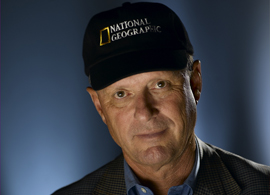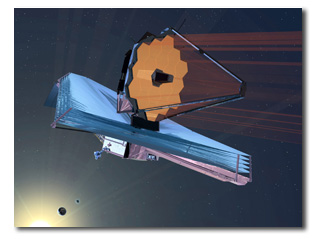Skip to comments.
Hubble peers back 13.2 billion years, finds 'primordial' galaxies
CNN.com ^
| 01/05/10
| Staff
Posted on 01/05/2010 7:27:14 PM PST by OldDeckHand
NASA's Hubble Space Telescope has reached back 13.2 billion years -- farther than ever before in time and space -- to reveal a "primordial population" of galaxies never seen before.
"The deeper Hubble looks into space, the farther back in time it looks, because light takes billions of years to cross the observable universe," the Space Telescope Science Institute said in a statement released Tuesday.
"This makes Hubble a powerful 'time machine' that allows astronomers to see galaxies as they were 13 billion years ago -- just 600 million to 800 million years after the Big Bang," the institute said in a statement released Tuesday.
The existence of these newly found galaxies pushes back the time when galaxies began to form to before 500-600 million years after the Big Bang, the institute said.
"These galaxies could have roots stretching into an earlier population of stars. There must be a substantial component of galaxies beyond Hubble's detection limit," according to James Dunlop of the University of Edinburgh in Scotland, who was quoted in the release.
(Excerpt) Read more at cnn.com ...
TOPICS: Astronomy; Science
KEYWORDS: bigbang; galaxy; nasa; universe
Fascinating stuff. Hubble, despite it's mechanical failings, has really proved to be invaluable scientifically.
To: OldDeckHand
... and it keeps on ticking.
I don't think there's any of the last Shuttle missions planned for servicing Hubble before the program ends this year.
To: OldDeckHand
The next space telescope, James Webb, will see even further than this, if my memory is correct.
3
posted on
01/05/2010 7:40:27 PM PST
by
BlueStateBlues
(Blue State business, Red State heart. . . . .Palin 2012----can't come soon enough!)
To: BlueStateBlues
"The next space telescope, James Webb, will see even further than this, if my memory is correct." That very well may be true, but isn't that telescope only going to be sensitive to the infrared spectrum? I'm not sure if we'll get the same spectacular pictures with Webb as we get with Hubble.
I also remember reading that Webb will in orbit about a million miles from Earth. I'm not sure where Hubble is, but a million miles seems like a long way away.
To: OldDeckHand
To: OldDeckHand
Monsignor Georges Lemaître, the father of the Big Bang theory of the creation of the universe, was asked once by a fellow scientist if astrophysics reminded him of God.
The Catholic priest said no, the science which reminds him of God is psychology.
Wow...
To: OldDeckHand
To: OldDeckHand
When did the universe add 10 billion years? Or is this just another case where what we were taught as fact really wasn’t?
To: CharlesWayneCT
"When did the universe add 10 billion years? Or is this just another case where what we were taught as fact really wasn’t?" The conventional wisdom is, and has been for some time, that the universe is around 14 billion years-old. It's our own solar system that is around 4-4.5 billion years-old. I'm not sure about the Milky Way - I think it's somewhere around 13 billion, according to contemporary scientific dogma.
To: OldDeckHand
While I'm a huge fan of space exploration and astrophysics,
I think another voice should be heard ... the video is 18 minutes long but well worth a look for anyone hooked on exploration.
Dr. Robert Ballard's [geophysicist by training] contention is that 1/10th of 1% of what we've seen under the ocean is unmapped and unexplored. Of course, it's a self-serving opinion for more funding, but some of his *accidental* discoveries have rocked the scientific world.
Dr. Bob Ballard bio:
From an early age, Robert Ballard was intrigued by the deep. He's perhaps best-known for his work in underwater archaeology; in addition to Titanic, he has found the wrecks of the Bismarck, the USS Yorktown, the nuclear sub Thresher (on a top-secret mission for the Navy -- for which the Titanic was his cover story) and John F. Kennedy's PT-109.
His contributions to our scientific knowledge of the ocean is just as awe-inspiring. He was in the first team of humans to view the deep-sea vents, and to understand how life can not only survive but thrive in these deep black waters, under extreme pressure and at extreme temperature.
He's also a powerful storyteller and a passionate scientific educator. He founded the Institute for Exploration and has pioneered distance learning in classrooms around the world. Through his JASON Project, 1.7 million students a year join scientists virtually as they experience the thrill of exploration and discovery.

10
posted on
01/05/2010 8:54:55 PM PST
by
Daffynition
(What's all this about hellfire and Dalmatians?)
To: OldDeckHand
"This makes Hubble a powerful 'time machine' that allows astronomers to see galaxies as they were 13 billion years ago -- just 600 million to 800 million years after the Big Bang," the institute said in a statement released Tuesday.What will these vain morons say when Hubble looks 14 billion years into the past? Then 15 billion? Oops?
To: CharlesWayneCT
Yeah...no one knows....hahaha...
Gotta have a sense of humor or despair about it...we are simply....well...can’t say the word here.....
To: OldDeckHand
Pretty good memory ;-)
Correct on both points.

13
posted on
01/06/2010 6:10:29 AM PST
by
Rafterman
("If you kill enough of them, they stop fighting." -- Curtis LeMay)
To: The KG9 Kid
the Hubble telescope was just serviced in November on STS-125. Hopefully, it will provide many years of science. It is truly an awesome instrument.
This is truly a great legacy for the Shuttle Program...the fact that Hubble could be maintained/upgraded by astronauts over the years is remarkable.
14
posted on
01/06/2010 4:27:58 PM PST
by
June2
To: Lancey Howard
"What will these vain morons say when Hubble looks 14 billion years into the past? Then 15 billion? Oops?" As long as I can remember, the estimated age of the Universe has bounced around from one number to another -- I remember it as once being 25 billion years old. Lately it seems to have settled down around 14 billion years:
"The age of the universe based on the "best fit" to WMAP data "only" is 13.69±0.13 Ga (the slightly higher number of 13.73 includes some other data mixed in). This number represents the first accurate "direct" measurement of the age of the universe (other methods typically involve Hubble's law and age of the oldest stars in globular clusters, etc)...""The first reasonably accurate measurement of the rate of expansion of the Universe, a numerical value now known as the Hubble constant, was made in 1958 by astronomer Allan Sandage. His measured value for the Hubble constant yielded the first good estimate of the age of the Universe, coming very close to the value range generally accepted today.
"However Sandage, like Einstein, did not believe his own results at the time of discovery. His value for the age of the Universe was too short to reconcile with the 25 billion year age estimated at that time for the oldest known stars.
"Sandage and other astronomers repeated these measurements numerous times, attempting to reduce the Hubble constant and thus increase the resulting age for the Universe. Sandage even proposed new theories of cosmogony to explain this discrepancy.
"This issue was finally resolved by improvements in the theoretical models used for estimating the ages of stars. Presently, using these new models for stellar evolution, the estimated age of the oldest known star is about 13.2 billion years.
"The discovery of microwave cosmic background radiation announced in 1965 finally brought an effective end to the remaining scientific uncertainty over the expanding Universe.
"The space probe WMAP, launched in 2001, produced data that determines the Hubble constant and the age of the Universe independent of galaxy distances, removing the largest source of error."
15
posted on
01/07/2010 11:04:54 AM PST
by
BroJoeK
(a little historical perspective...)
Disclaimer:
Opinions posted on Free Republic are those of the individual
posters and do not necessarily represent the opinion of Free Republic or its
management. All materials posted herein are protected by copyright law and the
exemption for fair use of copyrighted works.
FreeRepublic.com is powered by software copyright 2000-2008 John Robinson

